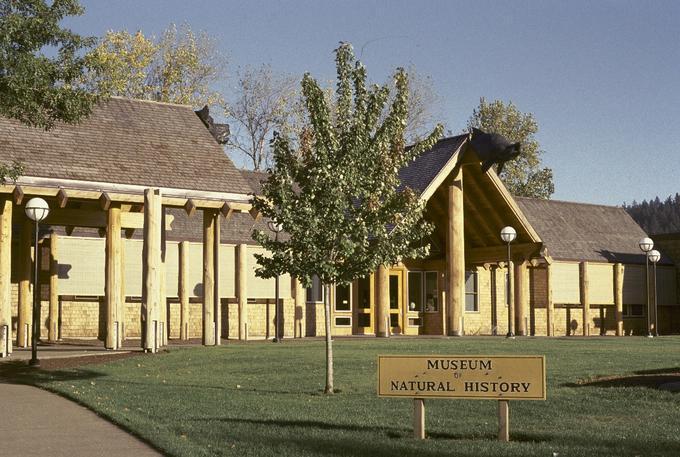At the time of his death in July 7, 1950, Abraham Lincoln Savage was considered one of Josephine County's oldest and most distinguished citizens. He spent his entire life in southwest Oregon as a teacher, school superintendent, county treasurer, and amateur botanist in one of the most diverse botanical areas of North America. His botanical interests were useful in his teaching and in aiding the professional botanists at the University of Oregon in their floristic investigations.
Savage was born on April 20, 1864, near Grants Pass, the sixth of thirteen children of Margaret Anne (McKenzie) and James Lee Savage. His parents had arrived in the Rogue Valley in 1853 after a six-month journey west with the Kellogg Emigrant train from Illinois. They homesteaded on what became known as Savage Creek, a tributary to the Rogue River. The Rogue River's Savage Rapids and the recently removed Savage Rapids Dam also bear the family name.
As a youth, Savage walked three miles to school and, according to one account, "generally made himself useful as a strong and healthy boy" at home. He had an interest in botany from an early age and graduated from Grants Pass High School in 1892.
In 1896, Savage graduated from Southern Oregon State Normal School in Ashland with a bachelor of Scientific Didactics degree, equivalent to today’s bachelor of education. The three-year "Normal Course" was "designed to aid teachers as rapidly as possible," and the rigorous curriculum included courses in mathematics and the sciences. Savage was named valedictorian and had the highest honors in his class of twenty-three students.
Devoted to education and the study of botany, Savage spent thirteen years teaching in Butte Falls, Ruch, Wilderville, and Kerby and was principal at Ruch, Butte Falls, and Kerby high schools. He was the Josephine county superintendent of schools (1900-1916) and an active member of the State Teachers' Association. He was a strong advocate for a uniform method and course of study, and Josephine County was the first in Oregon to establish such a system. The State of Oregon took up the same plan several years later.
Savage's teaching career ended with his election as Josephine County treasurer in 1924, a position he held until he retired in January 1949. But he always seemed to have time for botany.
When Savage was principal of Kerby High School in the Illinois Valley, he became acquainted with Albert Sweetser, a botanist at the University of Oregon herbarium (1902-1932). On April 29, 1923, the two men had some success locating Thomas Jefferson Howell's collecting sites from 1889. They also found hybrids between Henderson's (named for Louis Henderson) and Oregon fawn-lilies. Savage also worked with Louis Henderson, Sweetser's successor at University of Oregon, looking for fawn-lily hybrids.
Savage introduced botany into his teaching, and a number of his students' collections are in the herbarium at Oregon State University, along with more than 160 of his own collections, many from the 1920s and 1930s. In 1931, Louis Henderson named a small plant in the phlox family, Navarretia savagei, in his honor (it is now considered a synonym for a name proposed earlier and is no longer in use).
On Memorial Day 1958, 540 of Savage's specimens were presented to the University of Oregon's Natural History Museum (now the Museum of Natural and Cultural History) as the Lincoln Savage Memorial Collection. The collection was likely separated when the Natural History Herbarium was merged with the University of Oregon Herbarium. The specimens represented a valuable record of the southwest Oregon flora of the time.
Lincoln Savage married Ida Mary White on December 23, 1917. They had one son. Savage died on July 7, 1950. In 1960, Josephine County and the Three Rivers School District acknowledged his devotion to and effectiveness in education by naming Lincoln Savage Middle School near Murphy in his honor.
-
![Lincoln Savage stands in back row, 6th from left.]()
Oregon county school superintendents, Salem, 1913..
Lincoln Savage stands in back row, 6th from left. Courtesy Sunday Oregonian
-
![Location Notes: bluffs of higher Grayback Mt. Collector: L.F. Henderson, Lincoln Savage, Roy C. Andrews.]()
Penstemon deustus var. savagei Henderson.
Location Notes: bluffs of higher Grayback Mt. Collector: L.F. Henderson, Lincoln Savage, Roy C. Andrews. Courtesy Oregon State University Herbarium
-
![Location Notes: Grayback Mt. Collector: L.F. Henderson, Lincoln Savage, Roy C. Andrews.]()
Penstemon deustus var. savagei Henderson.
Location Notes: Grayback Mt. Collector: L.F. Henderson, Lincoln Savage, Roy C. Andrews. Courtesy Oregon State University Herbarium
-
![]()
"Educator Man of Action." Article on Lincoln Savage, Sunday Oregonian, Feb. 26, 1912.
Courtesy Morning Oregonian
-
![]()
"Educator Man of Action." Article on Lincoln Savage, Sunday Oregonian, Feb. 26, 1912 (2).
Courtesy Morning Oregonian
Related Entries
-
![Albert Sweetser (1861-1940)]()
Albert Sweetser (1861-1940)
Albert Raddin Sweetser established the University of Oregon Herbarium a…
-
Helen Gilkey (1886-1972)
Helen Margaret Gilkey was a nationally recognized mycologist, a talente…
-
Louis F. Henderson (1853-1942)
Louis Forniquet Henderson was one of Oregon's most important early bota…
-
![Southern Oregon University]()
Southern Oregon University
The origins of Southern Oregon University, situated on a leafy hillside…
-
![University of Oregon Museum of Natural and Cultural History]()
University of Oregon Museum of Natural and Cultural History
Located in Eugene on the University of Oregon (UO) campus, the Museum o…
Map This on the Oregon History WayFinder
The Oregon History Wayfinder is an interactive map that identifies significant places, people, and events in Oregon history.
Further Reading
Abraham Lincoln Savage, Portrait and Biographical Record of Western Oregon. Chicago, Ill.: Chapman Publishing Co., 1904.
Almack, J. C. "History of Oregon Normal Schools." Oregon Historical Quarterly 21:2 (June 1920), 95-169.
Blanchard, G. M. "Lincoln Savage - Josephine County's Man of the Century." Grants Pass Daily Courier, Sep. 11, 1995.
Love, R. "Albert Raddin Sweetser: Founder of the University of Oregon Herbarium." Kalmiopsis 6:13-15 (1996).













